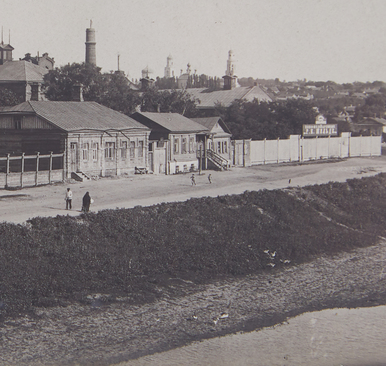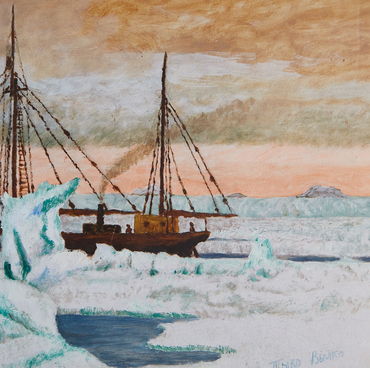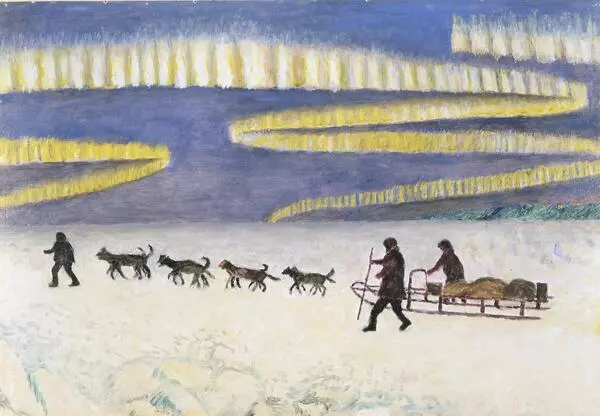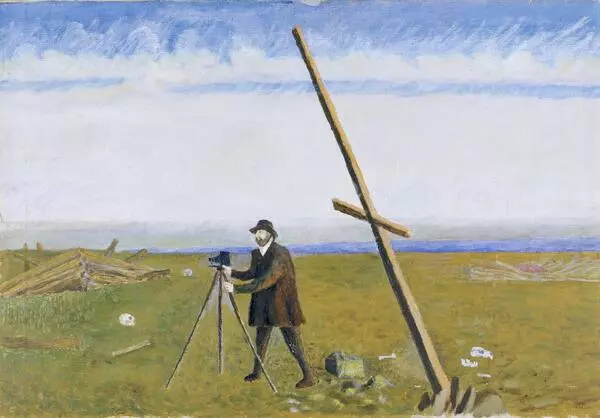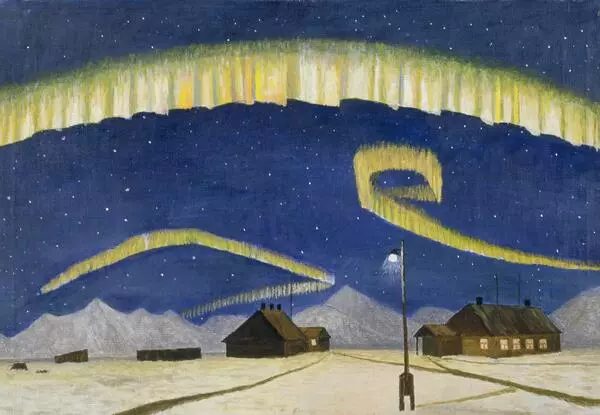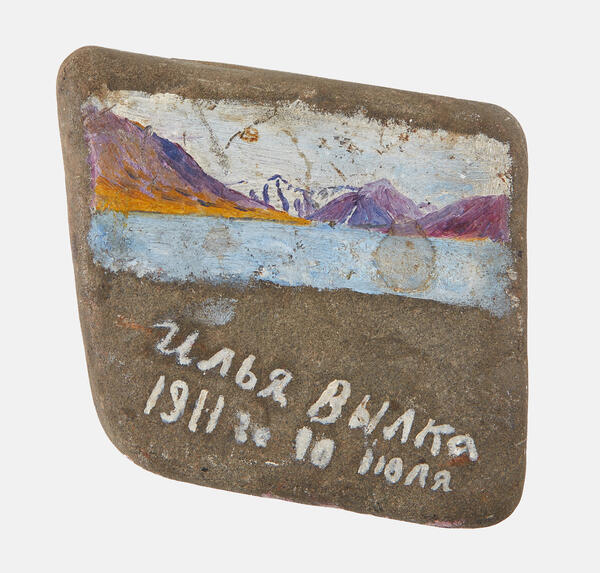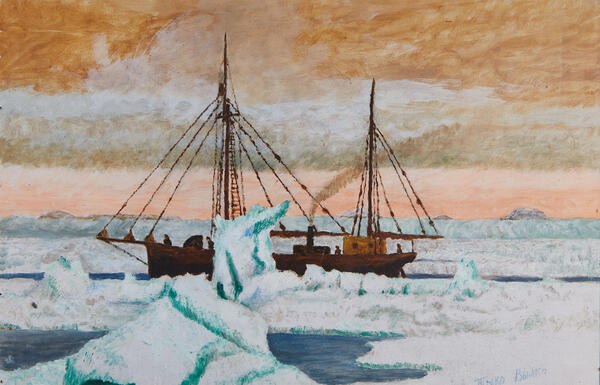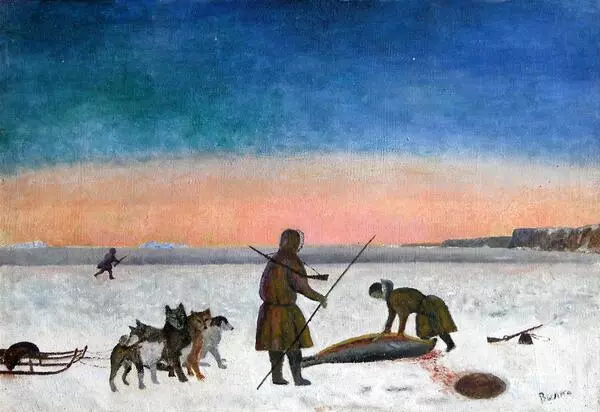One of the gems of the Rusanov House Museum art collection is the painting “Expedition in Krestovaya Bay” by Ilya Vylka.
“Expedition in Krestovaya Bay” is an “illustration” of Vladimir Rusanov’s expedition to Novaya Zemlya. In 1909, at the invitation of the Arkhangelsk governor Ivan Vasilyevich Sosnovsky, Vladimir Aleksandrovich Rusanov took part in a specially organized expedition to Novaya Zemlya as a geologist. The main goal was to survey Krestovaya Bay and search for coal deposits. In addition, the expedition was supposed to supplement and correct existing maps of the western coast of the island, as well as collect zoological, botanical, and geological items. Scientific research was to be the first step towards expanding Russian settlements on Novaya Zemlya. The Novaya Zemlya expedition of 1909 brilliantly performed its tasks and achieved important practical and scientific results. Rusanov’s scientific work started the geological study of the Northern Island of Novaya Zemlya, the expedition found the shortest land passage between the western and eastern coasts of the archipelago, and discovered deposits of coal and other minerals in the vicinity of Krestovaya Bay.
For a long time, the Russian government did not pay much attention to the foreigners using Russian polar territories, which at some point even gave rise to unjustified hopes that those lands may be in some way acquired. The increased foreign interest in Novaya Zemlya was not accidental. The rapid development of technology indicated that in the nearest future the desert polar lands could become a source of raw materials that many states were looking for.
Even before Rusanov’s work on Novaya Zemlya,
enormous research materials and a lot of diverse scientific information had
been accumulated there — all this waiting only for a researcher who could use
the data in the best possible way, filling in the gaps with observations. This
was to become Vladimir Rusanov’s role. Rusanov devoted five years to the study
of Novaya Zemlya, he walked along its shores, mapped previously unknown bays,
islands, explored glaciers and mountains. Rusanov’s expeditions to Novaya
Zemlya were crucial in securing this land for Russia, and the 1912 expedition
established the Russian presence in distant Spitsbergen.

